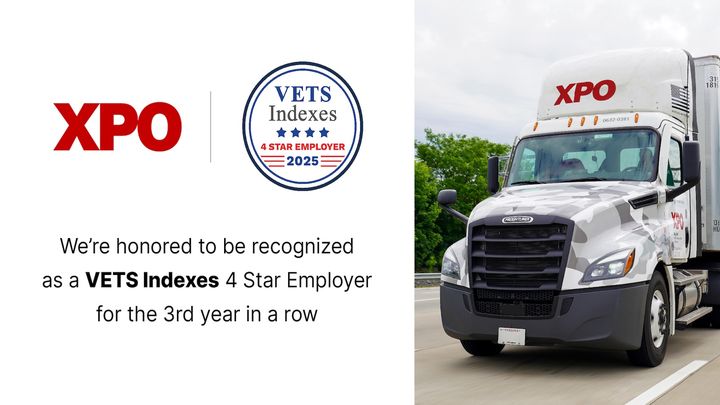Five Takeaways from a Discussion on Diversity & Inclusion
I recently had the opportunity to moderate a discussion on diversity and inclusion with a panel of four women who are D&I champions in global companies. I was inspired by their openness in sharing their personal experiences, and gratified that their contribution added so much value to the D&I conversation. While it’s challenging to do their insights justice, I’d like to share my top five takeaways.
- We need to be ourselves at work rather than try to fit in.
The panelists uniformly stressed how essential it is to just be yourself. LaQuenta Jacobs, at the time of the discussion a senior human resources leader at XPO and now XPO’s first chief diversity officer, said she learned early on about the importance of being authentic. “It starts with your own personal acceptance,” said LaQuenta, who’s African-American. “Once you accept yourself you can show up in a way that makes others willing to accept you, engage you, and draw out what you have to give to the organization or the relationship.”
Kristan Soto, global integrated supply chain director at Dow Chemical, said she gave up trying to fit in a long time ago, and that’s worked to her advantage in a male-dominated environment. She recounted an experience as the leader of a large production facility when she brought in heart-shaped cookies on Valentine’s Day. “No male production leader could get away with that,” she joked. “I was just me and I brought it all to work, and that helped other people be more comfortable.”
Beth Kennedy, a supply chain account executive at Gartner, pointed out how boring it would be if everyone were the same. “Own who you are,” she said, “and be confident that what you’re bringing is adding to that mosaic that’s being created in your company and community.” - Companies with a more inclusive environment are more innovative and deliver better results.
Josselyn Rosario, North America director of supply chain performance chemicals at BASF, said her company has found that the regions with a more diverse employee population are more entrepreneurial and move faster. “Companies like BASF are moving people to different places so they can bring their different backgrounds and ways of thinking,” Josselyn said. “That’s helped us to drive our results globally, rather than being limited to one region.”
Kristan followed up by pointing to the bottom line. “The data is clear: Companies with a more inclusive environment are more innovative and they deliver better results,” she said. “You can see it in their stock price, in their return on capital, in the amount of money they get from innovation.” Kristan said your finance people will tell you, this delivers dollars. “This is not just a nice-to-do anymore,” she said. “This is a ticket to entry.” - Young people are attracted by a company’s values, not just job titles and compensation.
This generation is much more concerned about D&I, sustainability, community outreach and being a good corporate citizen than previous generations have been. Recruiting top talent is going to be increasingly difficult for any company that lags in those areas.
With years of experience in recruiting, LaQuenta has found that candidates want to feel a sense of belonging and a connection to the organization. “Conversations with top talent are shifting away from the job title and compensation,” she said. “There are more conversations around diversity initiatives, presence in the community, inclusive benefits.” She said successful companies create an awareness of their cultural values before the need to fill a position arises. For candidates, “it’s about the opportunity to give back and feel like they belong,” LaQuenta said. “They want to know that what’s important to them is important to the company. They want to know that there’s a place for them in the organization, and that their ideas and values are being heard.”
Beth, who teaches supply chain courses at the college level, hears it directly from students. “With young people it used to be all about the technology they get to use at work, and that’s changed significantly,” she said. “Young people are concerned about sustainability, giving back to the community, D&I. They really have a completely different set of criteria than they had even five to seven years ago.” - Supplier diversity needs to be a core element of a company’s D&I program.
There’s no better way for a company to put its D&I money where its mouth is than to support companies owned by women and minorities.
“Dow is part of a bigger community, and we can’t say we support the entire community if we don’t support minority-owned businesses,” Kristan said, noting that those businesses are often relatively small. She pointed out that as a huge global company, Dow prepares vendor contracts that can be dozens of pages long, and that would overwhelm a small company that might not even have a lawyer on staff. “As part of our supplier diversity program we’ve created a streamlined contract process to support that,” Kristan said. “We have a huge role to play in building a diverse supply chain with diverse suppliers.”
LaQuenta added that too often, companies engage vendors with a “this is what works for us” mentality. “We need to broaden our palette and think about what’s going to attract that supplier to want to work with us,” she said. “It creates loyal partnerships, and it’s those partnerships that keep us moving through things like COVID-19.” - Advancing D&I requires courage and humility.
Josselyn, who’s originally from Puerto Rico, recounted times early in her career when she was excluded from meetings due to the level of her English proficiency. Asked for her best advice for someone who’s coming into a new environment from a different background or culture, Josselyn spoke from the heart. “Be respectful in how you drive your message,” she said. “We’re all continuously learning about the topic. Be humble and be aware that all of us have room to grow."
LaQuenta agreed that humility is key, but added that courage is, as well, especially when engaging with colleagues in more senior positions. She recommended seeking mentors to help guide the approach. “I’ve had some courageous conversations on how others perceive me, and I’ve given some courageous feedback,” she said. “There were times when I had to manage up, and it took guts.”
At the same time, LaQuenta said it’s important to keep the discussion in perspective, and recognize it’s a journey. “Don’t overcomplicate it,” she said. “It’ll become part of the fabric of who we are.”


